Overview of artillery. Part of 5. Towed systems
Although the Light Gun is no longer made, it is used by many armies under the designation L118. The US Army is armed with a variant of the L119, which can shoot M1 ammunition
In order to cope with the mass restrictions inherent in airborne troops, 155 barrels are usually installed in 39-mm artillery systems. This means that their range when firing standard ammunition barely exceeds 20 km, but this is quite enough for this kind of operations. The latest-generation towed gubbit guns have 52 caliber barrels, which naturally increase the firing range. How viable solutions are being towed, if we compare them with systems installed on a truck chassis with the same artillery unit, we can only guess. Some armies threw a gun towed behind a truck to put a gun on a truck. But, the set of 155-mm systems of caliber 39 remains in service even in the armies of the first echelon; in most cases, limited budgets remain the main reason for this choice.
India’s total need for artillery systems is enormous, and the towed howitzer gun is no exception. Two 2014-mm / 155 systems participated in the trials ending in the fall of 52, Trax from Nexter and Athos from Elbit Systems. Meanwhile, in order to solve technical problems identified in the 2013 year, their competitor with the shorter 45 caliber barrel and 38 km long range, which is a further development of the Bofors FH77B howitzer developed in India, passed the next test. The Indian Army has ordered Ordnance Factories 116 with such cannons, but the purchase of 300 guns is still possible. The part of the Indian Army Modernization Plan concerning the towed gun system TGS (Towed Gun System) is a very tasty morsel, since Delhi must purchase about 1580 systems. India recently lifted a ban on the activities of several defense contractors, including another manufacturer of artillery systems, albeit of a heavier class, the South African company Denel. In addition to purchasing “heavy” field howitzers, Delhi also planned to purchase 145 ultralight howitzers M777, but the delay in this project was explained by the fact that BAE Systems had halted the production of ultralight howitzers, which, along with an increase in the dollar, significantly increased the estimated budget of this program. However, in January 2015, BAE Systems proposed to transfer the entire M777 assembly line from the United States to India in order to partially solve this problem and to provide even greater adaptation of the howitzer to the customer. It is unclear how much it will help resume the process of buying howitzers.
The M777 system was designed to provide the US Army and Marine Corps with air-transported 155-mm artillery that would complement the heavier howitzer M198. The weight limit of 10000 pounds (4218 kg) was determined, and the condition was put forward to use the same titanium and aluminum alloys used to make the previous system in the manufacture of the new system. Due to the fact that M777 did not receive the propulsion system, it must be transported on the suspension of the CH-53E and CH-47D helicopters and aboard the convertible plane MV-22 Osprey and the C-130 transporter. For towing for short distances, a Humvee armored car is sufficient, although a longer vehicle is required for long distances. The M777 howitzer has a firing rate of five rounds per minute to two minutes, a long fire rate is two rounds per minute.
Canadian gun M777 on the suspension of a helicopter CH-47 Chinook; The ultra-light howitzer 155 / 39 from BAE systems can also be transported by a CH-53 helicopter of the Marine Corps.
The initial version of the M777 was equipped with an optical fire control system, an on-board power source was added to the A1 configuration system to supply a digital kit that included the INS / GPS positioning and navigation system (the INS is the inertial navigation system, GPS is the global satellite positioning system), a radio station display module of the gun and the control unit of the commander of the calculation. In order to make M777 compatible with Excalibur controlled ammunition, the M777A2 version has been developed, to which an improved induction fuze installer has been added, as well as software. The howitzer is in service with the American army, marine corps, Australian and Canadian armies. Since 2006, M777 howitzers deployed in Afghanistan have fired tens of thousands of shells, including Excalibur guided missiles. Due to the fact that integration of the modular artillery charge system MACS (Modular Artillery Charge System) is envisaged, further improvements may be included in the new fire control system (FCS), as well as in a laser charge initiation system. In addition to the Indian customer, the Brazilian Marines recently also expressed interest in acquiring a small number of howitzers, but budget constraints forced her to postpone her choice.
Another 155-mm lightweight howitzer in the 39 caliber category, designated Pegasus, was developed at the beginning of the 2000-s by the joint efforts of the Singapore Army, the Office of Military Applied Research and Singapore Technologies Kinetics. Several conditions have been put forward: the 5,4 tonnage mass limit, the barrel and the carriage are made of titanium and aluminum alloy, as well as the scheme with an auxiliary power unit (APU) for howitzer movement over rough terrain. When deploying a howitzer APU is also used to power the automatic loader, which allows Pegasus to produce a volley of three shots in 24 seconds. The new recoil system reduces the recoil forces by a third compared to the recoil forces of the standard 155-mm system. The new howitzer entered service in October 2005, replacing the French 105-mm lightweight gun LG1. There is no information on export orders for Pegasus today.
The Athos Autonomous Towed Howitzer (Autonomous Towed Howitzer Ordnance System), manufactured by Elbit, an Israeli company, was recently commissioned by the Philippines.
The 155 / 52 APU-SIAC howitzer was originally developed by Santa Barbara; is in service with Spain and Colombia and can be acquired by Brazil
In the Far East, another country, China, has developed an ultra-light howitzer AH4 155 / 39 weighing about 4 tons, but there are very few details about it.
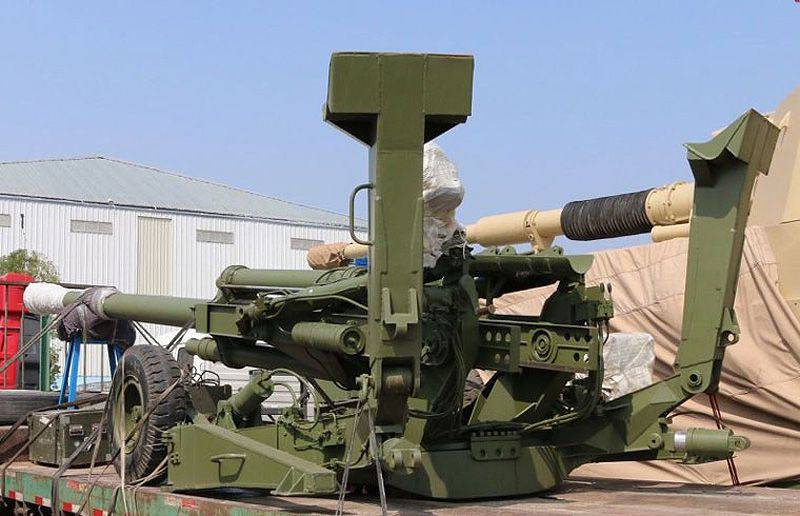
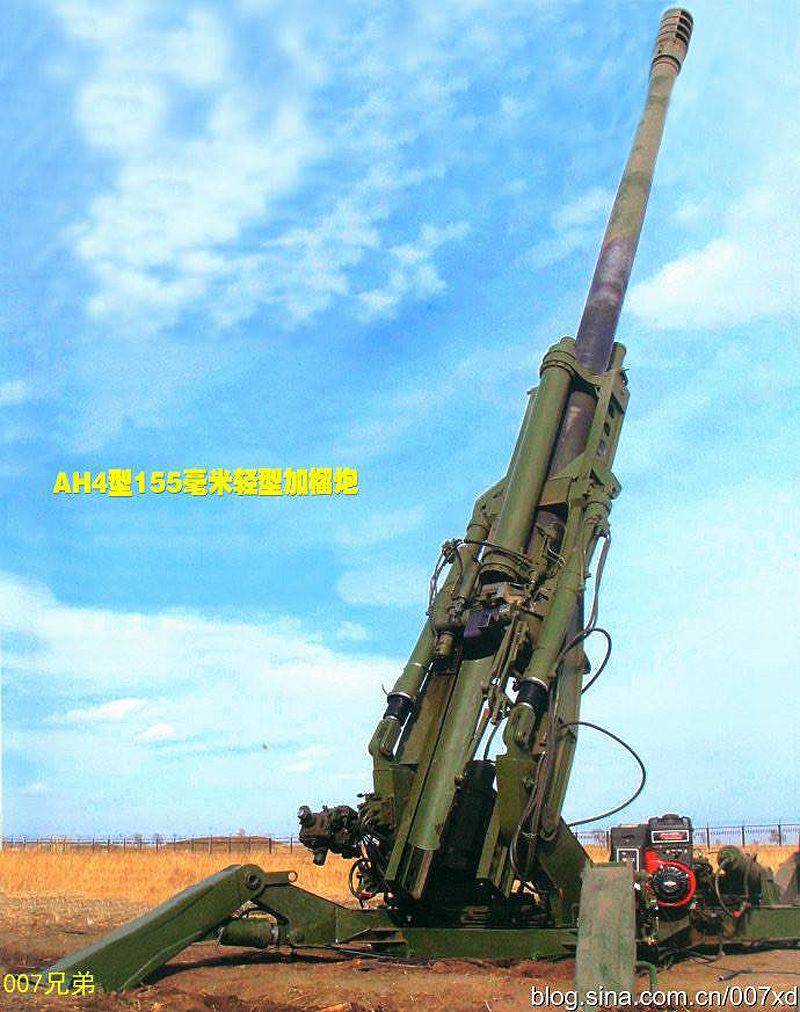
Chinese 155-mm howitzer AH4 155 / 39
Let us turn to the "heavy" systems. In the Trajan howitzer, Nexter used its experience of creating towed howitzers as well as self-propelled howitzers in the 80s. Caesar (see Part 2. Hell on wheels). The Trajan system, specially designed for the Indian application, is currently in the prototype stage. This towed howitzer is based on the swinging parts and sighting system of the Caesar howitzer mounted on a modified TR-F1 carriage. Equipped with a crane for handling ammunition and an automatic loading and discharging system, it has a rate of fire of six rounds per minute. Deployment of the howitzer is carried out using the APU and hydraulic systems, with the calculation of six people, the readiness to fire is less than 90 seconds. The APU guarantees a good level of autonomy, the system can move over rough terrain at a speed of 5 km / h. Nexter in 2011 organized a consortium with Indian Larsen & Toubro to localize production and is currently awaiting a request for proposals from the Indian side.
Nexter’s Trajan howitzer for an Indian towed artillery competition was developed to a prototype stage and is still awaiting its first customer.
The Athos howitzer (Autonomous Towed Howitzer Ordnance System) was developed by the Israeli company Soltam (currently included in Elbit Systems), its swinging masses and carriage are able to receive barrels of various calibers, including modern models of 52 caliber. The system is currently being offered to India. To this end, a joint venture was established with the Indian company Bharat Forge Limited for the production of Athos howitzers at a local plant. With its automatic loader system, it can shoot three shots in 30 seconds, an intense rate of fire is 12 shots in three minutes, and a long rate of fire - 42 shots per hour. Equipped with digital navigation, fire control and guidance systems, the gun can also fire at direct distance to 1,5 km. Its APU drives the howitzer's hydraulic system, as well as two main wheels, which allows you to independently withdraw from the position after completing the fire mission. The Philippines recently ordered an Athos howitzer; in March 2014, Elbit Systems received a contract from this country for 12 systems worth almost 7 million euros.
Another 52 system caliber advances the US General Dynamics European Land Systems. It was originally developed by the Spanish company Santa Barbara under the designation 155 / 52 APU-SIAC (Sistema Integrado de Artilleria de Campana). Compared to other systems in this category, the Spanish cannon has a carriage with four main wheels and two more wheels on the openers, while all the wheels are raised. The howitzer is equipped with a ballistic computer, a radar measuring the initial velocity, a temperature sensor in the chamber, a rollback force sensor and an effective-shot counter. Thanks to her wheels and the Ukrainian Armed Forces, she can be ready to fire in two minutes and leave the position in one and a half minutes. There are several firing modes: three shots in 11 seconds, 4 shots in 20 seconds or 10 shots per minute, a long fire rate is two shots per minute. In the MRSI mode (simultaneous impact of several projectiles; the angle of inclination of the barrel changes and all projectiles fired at a certain time interval arrive at the target simultaneously) a howitzer can fire up to 4 shots. Also, the howitzer is in service with Colombia in the 155 / 52 APU-SBT configuration. The SIAC system also became interested in the Brazilian Marine Corps.
The Singapore company Singapore Technologies Kinetics developed the 52 caliber cannon, starting with its FH-88 155mm / 39 model and retaining the same four-wheel carriage layout. Howitzer received the designation FH2000; it is equipped with a semi-automatic loading system and a hydraulic rammer, which allows you to maintain the rate of fire of 6 rounds per minute for three minutes. The FH2000 howitzer is in service with Singapore and Indonesia. This system was taken as the basis for the T-155 Panter Turkish Towed Howitzer. STK provided technical assistance in the development of the system of the Turkish state company MKEK. Howitzer T-155 Panter, equipped with a more powerful APU, heavier than the original model FH2000. The Turkish army is armed with several hundred Panter howitzers. Turkey also exported this system to Pakistan, which manufactured several dozens of these howitzers at its plants.
The AH155 1 45 towed howitzer manufactured by the Chinese company Norinco, once known as the GC45, has a four-wheel carriage with two small wheels on openers. It originates from the PLL01, the first 155-mm cannon that entered service with the Chinese army. Its range reaches 39 km when using ammunition with a bottom gas generator and 50 km when firing active-rocket projectiles. Thanks to the pneumatic rammer, the rate of fire is three shots per minute. The howitzer AH 1 is in service with at least one other country, Algeria. A version of the 52 caliber was developed under the designation AH2, the mass of which increased by one ton compared to AH1. Ethiopia is likely to become the first customer of the system, but here it is necessary to take into account the extreme closeness of China in such matters and therefore the contract will never receive wide publicity.
True lungs
While many countries have replaced their 105-mm light guns with light 155-mm systems, those who cannot afford them because of the cost or cannot operate helicopters that cannot lift such guns while relying on smaller caliber systems. . Here there is another problem - the supply of ammunition, given how heavy ammunition 155-mm shells and charges. Perhaps now this market is considered a niche, but it still remains a market.
The Nexter 105 LG1 howitzer weighing just 1,6 tons can, of course, transport medium-sized helicopters. Colombia, being one of the last buyers of this system, has developed an interesting concept of its application. LG1 is used as a means of assault artillery, because it is easily deployed anywhere in the area of operation, while providing simple and reliable fire support. The GPS / INS navigation and positioning system allows you to quickly open fire with a LG1 howitzer; however, Colombian experience has shown that each howitzer should be able to process shooting data based on target data obtained from the army network. In this regard, the company Nexter has developed a prototype of a light computer data processing for shooting Toplite, which is currently in the last stage of development. Toplite communicates via a wireless WiFi network with a digitized gun, reducing errors and speeding up the firing process. Nexter has not yet received an order for this system, but it is obvious that Colombia has shown increased interest in it.
The advantages of 105-mm howitzers is also in the smaller mass of ammunition to them. For example, the Nexter LG1 field gun can be transported on the suspension of a multipurpose Eurocopter EC725 Cougar helicopter
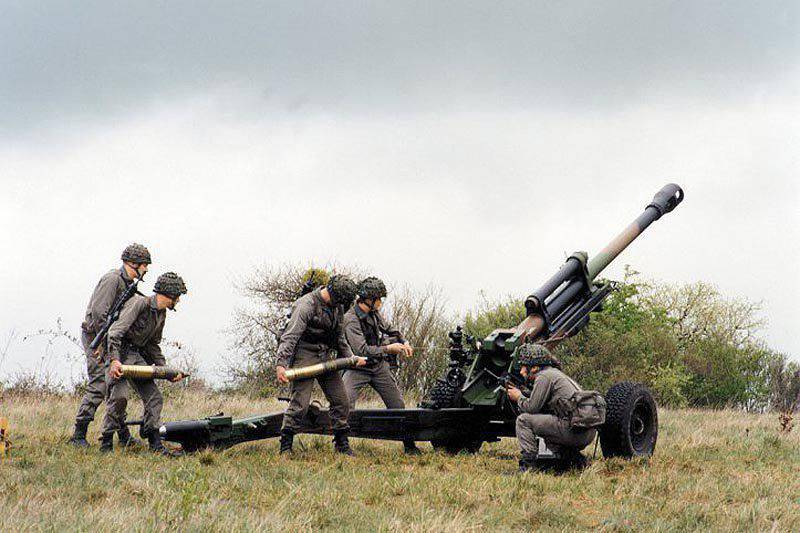
Firing a Nexter LG1 howitzer is easier with a lightweight data processing computer for shooting Toplite
At the end of 2014, the gunners of the 101 Airborne Division of the American Army conducted the first shooting from a digitized light cannon M119A3. It is the newest version of the L118 / M119 Light Gun light gun from BAE Systems. The gun is equipped with a digital fire control system that includes an inertial navigation unit, GPS, gunner’s display, digital communication between all guns and the Fire Direction Center high-precision targeting technology, as well as other elements that allow the gun complex to independently determine its exact geographic location. The digital system allows you to make the first shot in two or three minutes, unlike the 10 minutes in the previous version of the M119A2. The software on 90% is compatible with the software M777A2, which in turn is very similar to howitzer software M109A6 Paladin, and this allows you to simplify the standard calculation steps and save money on development. All elements of the previous version of A2 are saved in the gun, which allowed the calculation to switch to manual mode when digital systems fail in some situations. M119 is an American-made version of the L118 Light Gun, which was originally developed in the middle of the 70 by Royal Ordnance (now BAE Systems).
The British army has upgraded its light guns with a Linaps automatic laser targeting system from Selex ES. BAE Systems offers similar modernization programs for the export market.
Other countries have also digitized their light guns. The British Army adopted the Linaps automatic targeting system from Selex ES for its L118 guns; Canada, the United Arab Emirates, Oman, South Africa, Malaysia and Thailand, which have integrated the system into guns of various types, also did not stand aside. New Zealand became the latest customer by installing the Linaps system on their L119 Light Guns. Linaps includes the initial velocity measurement radar, the FIN 3110L inertial navigation unit, the instrument guidance unit, the battery unit and the calculation commander's terminal, which is a hardened tablet computer with the ability to overlay layers on operational maps. The latest options have a display control unit with an 10,4 inch screen. The inertial navigation system Linaps INS / GPS provides circular probable deviations of 10 meters in the vertical and horizontal planes, the accuracy in azimuth is less than one thousandth of a distance.
Howitzer G7 produced by the South African company Denel has an unusually long barrel caliber 52, which allows you to get a range of about 32 km shells with a bottom gas generator. But this in turn caused an increase in mass to about 3,8 tons. However, G7’s weight reduction measures of at least one tonne are already being considered. Further work is likely to depend on the appearance of the launch customer.
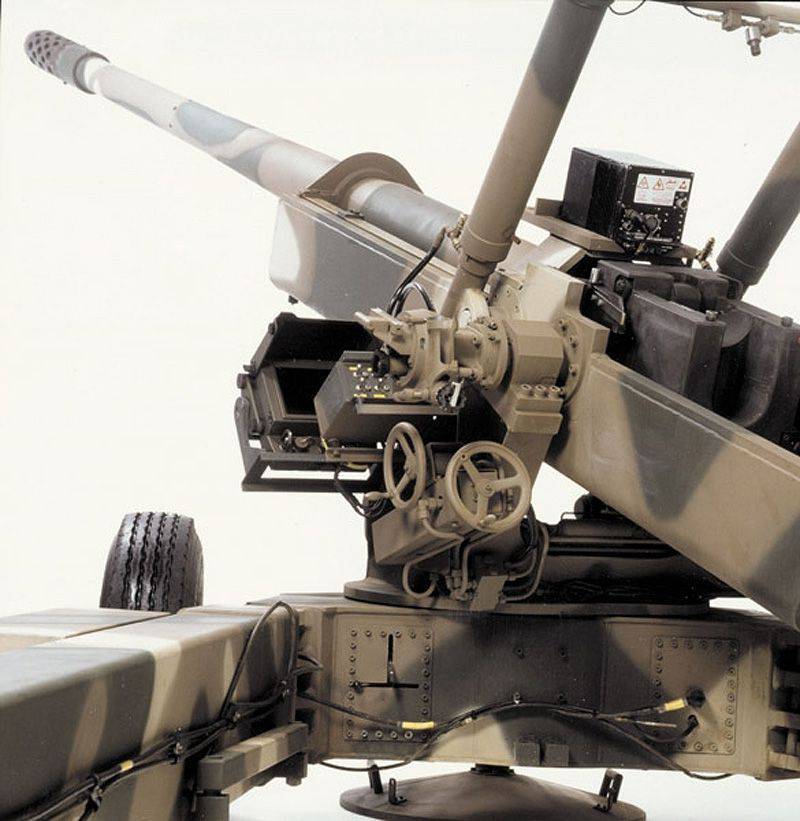
Howitzer G7 production of the South African company Denel
The FH-70 system is outdated, but some countries, in anticipation of better times, plan to upgrade it and subsequently replace it with light 155-mm howitzers
FH-70: conservative gun
The 155-mm / 39 field weapon of the Cold War era is definitely outdated; however, she does not want to retire. Perhaps due to reduced defense budgets, it remains in service with different countries, although almost all countries-manufacturers have suspended this system. With the exception of Italy, which plans to keep it in operation even 10-15 years. The gun modernization program is currently underway. Stage 1 provides for the development of a prototype that can interact with the Italian SIF (Integrated Fire System) operational control system, upgrading three more guns to this standard, as well as the standard Astra tractor. The main part of the modernization involves a new diesel APU, the integration of the targeting system Selex-ES Linaps and the purchase of an Astra artillery tractor. The prototype was supposed to be tested in the summer of 2015. According to the 2 Stage, another FN-74 70 howitzer will be upgraded and new tractors purchased. In addition, Oto Melara is developing a kit that will allow the FH-70 modernized howitzer to be fired with Vulcano ammunition.
Soviet-Russian towed systems
On the site topwar.ru read a series of interesting articles about the wonderful towed guns created by Soviet and Russian designers.
X-NUMX mm D-152 howitzer gun
Soviet howitzer D-30 caliber 122 mm
130 mm gun M-46 model 1953 of the year
180 mm C-23 gun
Anti-tank gun MT-12
152 mm Towed Howitzer 2A61
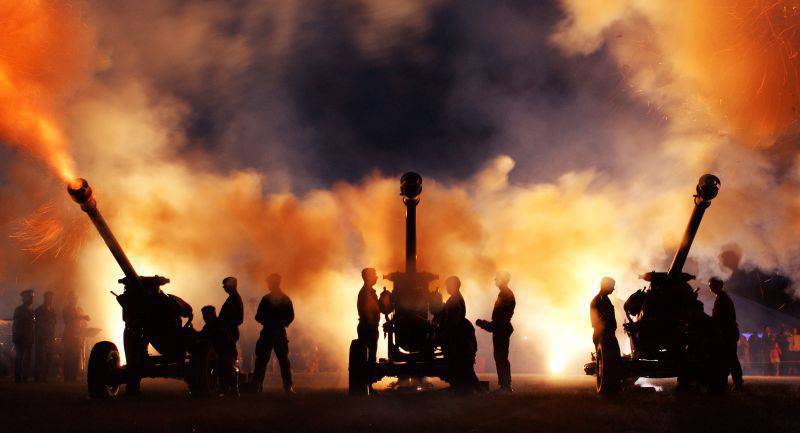
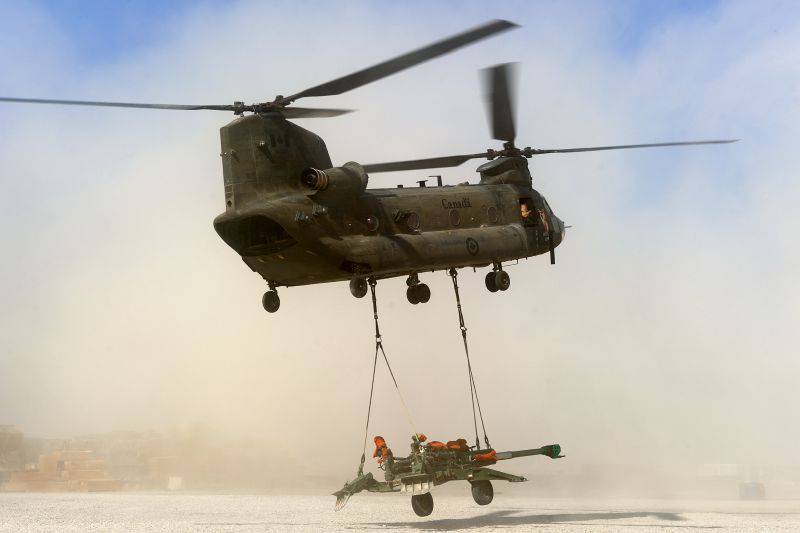
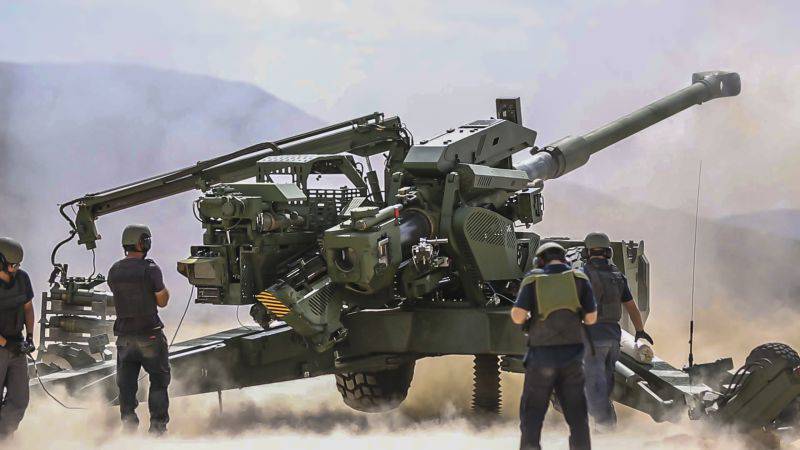
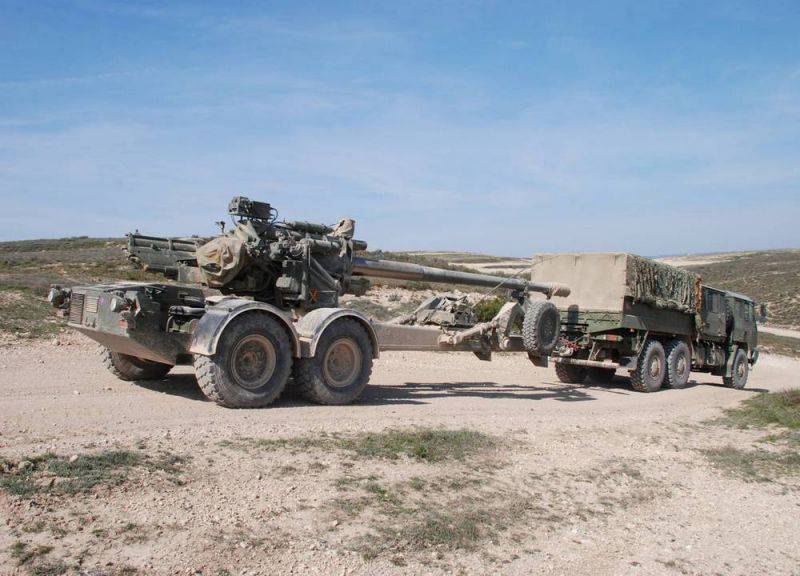
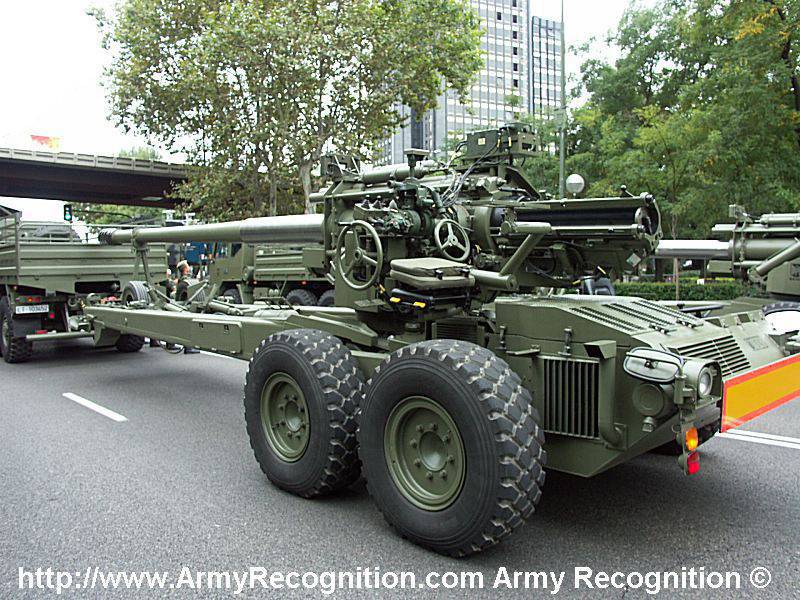
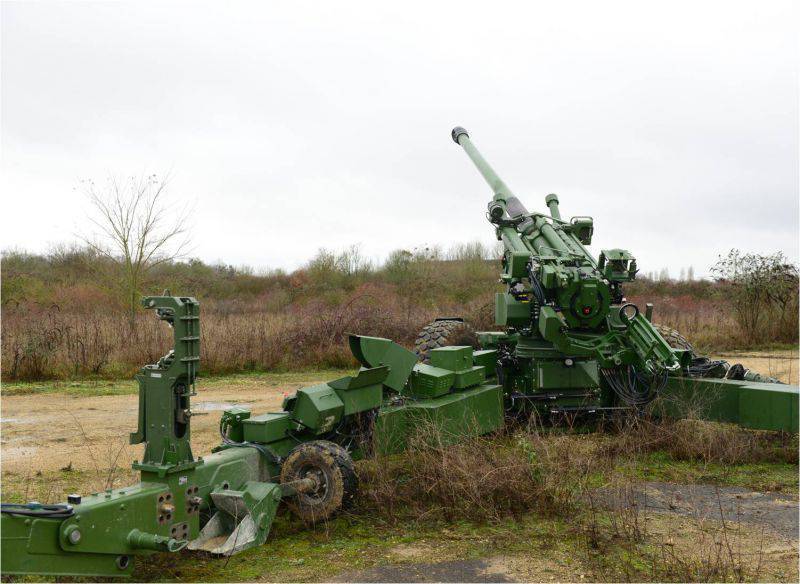
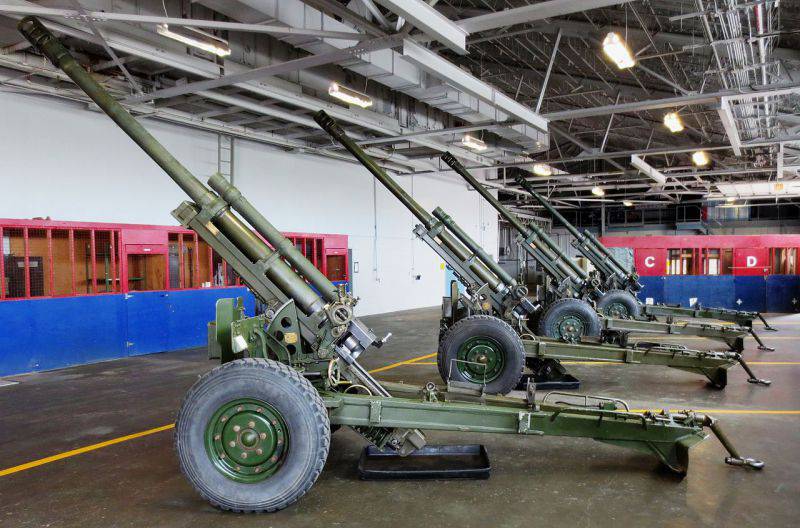
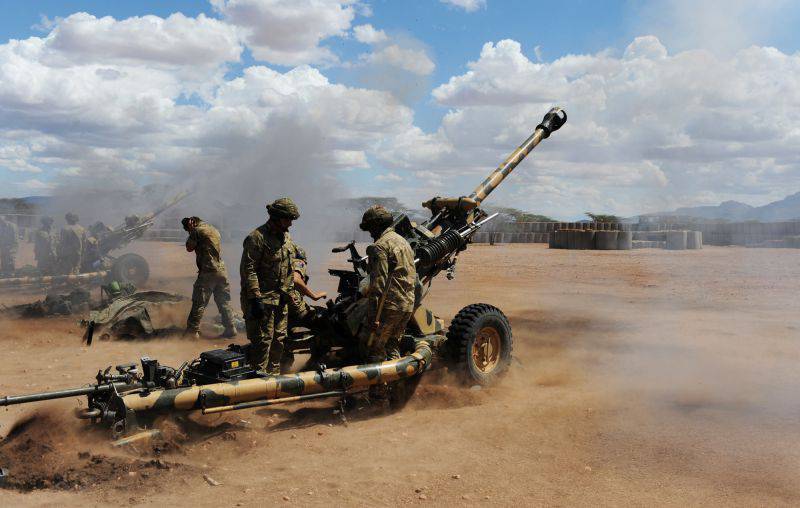
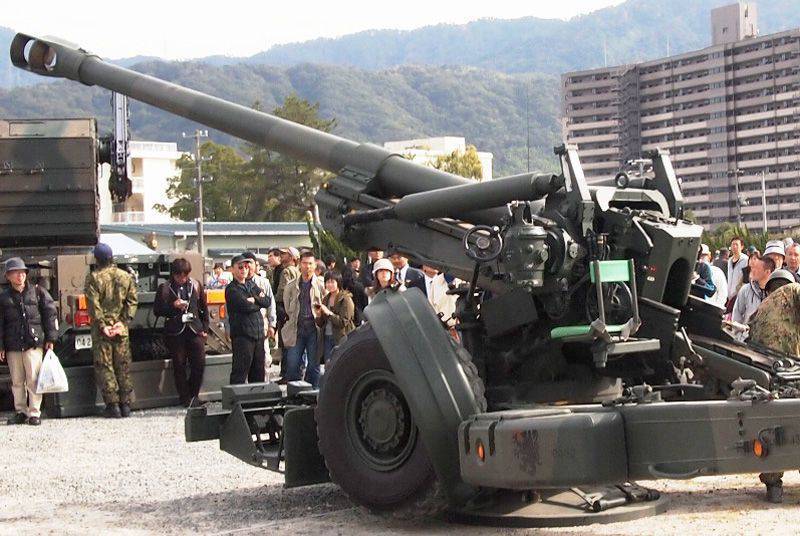
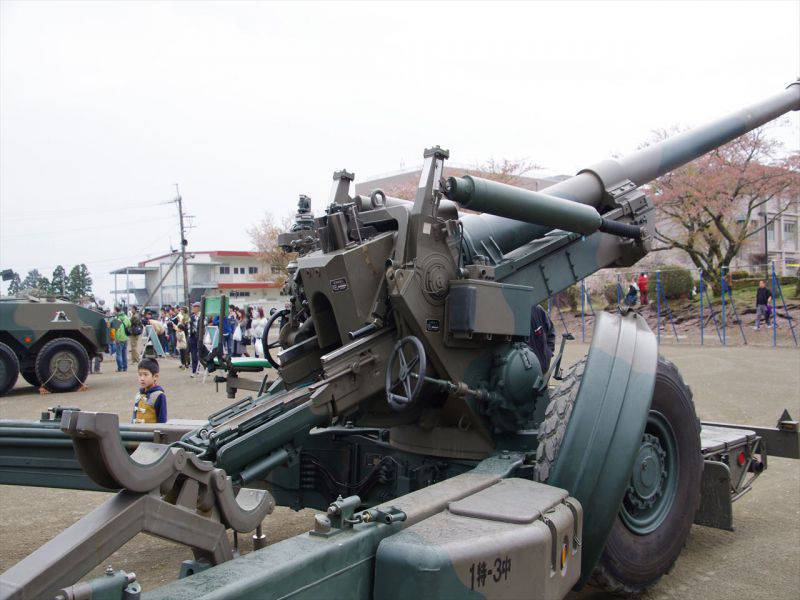
Information